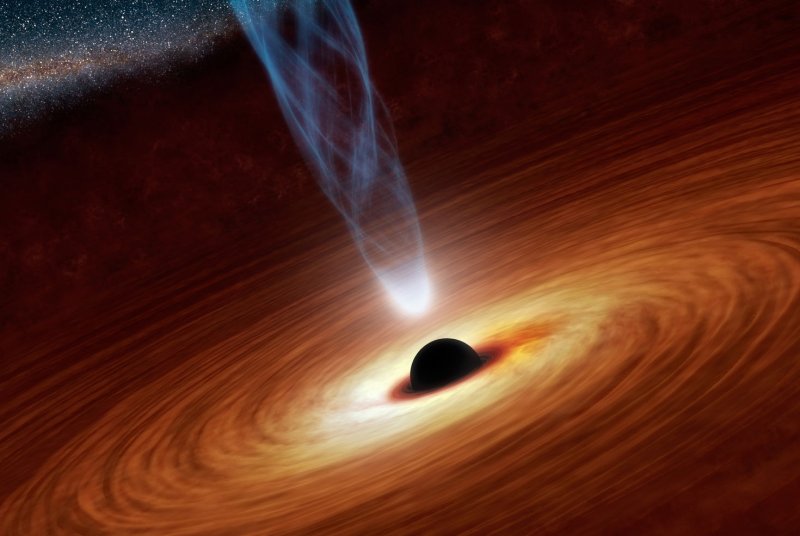An artist's rendering shows a supermassive black hole at the center of a galaxy. File photo by UPI/NASA |
License Photo
LEICESTER, England, May 21 (UPI) -- NASA's Wide-field Infrared Survey Explorer, one of the agency's post powerful space telescopes, has located the most luminous galaxy to date -- emitting 300 trillion suns worth of infrared red light.
The galaxy, named WISE J224607.57-052635.0, belongs to a newly defined class of galaxies known as extremely luminous infrared galaxies, or ELIRGs. WISE was also responsible for helping astronomers find new types of extra-bright star clusters.
Researchers believe an especially hungry supermassive black hole at the center of the galaxy is likely responsible for the galaxy's impressive luminosity. As the black hole swallows the surrounding gas, it emits visible, ultraviolet, and X-ray light. Dust clouds absorb that light, and as they do, they heat up and give off infrared light.
Finding a black hole at the center of a galaxy isn't rare, but finding one this big in a galaxy so far away is unusual and unexpected. Because the galaxy is 12.5 billion light-years away, it offers scientists a glimpse into the universe's past. That means the galaxy's black hole grew very big, very fast, at a relatively young age.
"The massive black holes in ELIRGs could be gorging themselves on more matter for a longer period of time," researcher Andrew Blain, a professor at the University of Leicester's Department of Physics and Astronomy. "It's like winning a hot-dog-eating contest lasting hundreds of millions of years."
ELIRGs are only one of a several new types of galaxies identified by WISE. The telescope's ultra-sensitive infrared instrumentation offer astronomers one of the most detailed and comprehensive views of the universe, revealing stranger (and bright) new specimens never seen before.
"We found in a related study with WISE that as many as half of the most luminous galaxies only show up well in infrared light," said Chao-Wei Tsai, a scientist at NASA's Jet Propulsion Laboratory and lead author of a new study on the super-bright galaxy.
Tsai's paper is published in the Astrophysical Journal.















